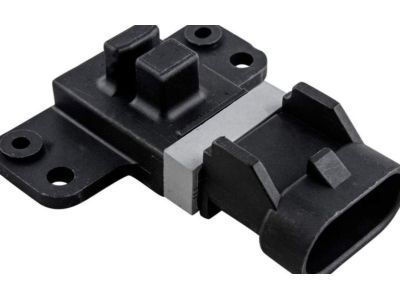My Garage
My Account
Cart
Genuine Chevrolet K1500 Camshaft Position Sensor
Cam Position Sensor- Select Vehicle by Model
- Select Vehicle by VIN
Select Vehicle by Model
orMake
Model
Year
Select Vehicle by VIN
For the most accurate results, select vehicle by your VIN (Vehicle Identification Number).
1 Camshaft Position Sensor found
Chevrolet K1500 SENSOR ASM,CM/SHF POSN (KIT)
Part Number: 19417445$61.08 MSRP: $111.06You Save: $49.98 (45%)Ships in 1 Business Day
Chevrolet K1500 Camshaft Position Sensor
The Camshaft Position Sensor in Chevrolet K1500 cars is an important feature that determines the position and speed of the camshaft to pass information to the engine control module-ECM regarding fuel injectors, and ignition timing. The sensor is normally located above the camshaft, but it may taper with the specific model of the car in use. Coupled with the Crank sensor, the Camshaft Position Sensor assists in the lining up of the engine ancillaries as far as timing of injection and measurement of the revolutions per minute is concerned. Owing to the fact that Camshaft Position Sensor is a crucial component of the vehicle, its failure exposes the vehicle to poor performance; therefore maintenance check up and monitoring is crucial.
Each OEM Chevrolet K1500 Camshaft Position Sensor we offer is competitively priced and comes with the assurance of the manufacturer's warranty for the part. Furthermore, we guarantee the speedy delivery of your orders right to your doorstep. Our hassle-free return policy is also in place for your peace of mind.
Chevrolet K1500 Camshaft Position Sensor Parts Questions & Experts Answers
- Q: How does the camshaft position sensor operate on Chevrolet K1500?A: The camshaft position sensor operates similarly to the Crankshaft Position Sensor, producing a signal pulse once every two crankshaft revolutions. It works alongside with the crankshaft position sensor to determine when fuel is injected in each cylinder. Only models made between 1996 and 2000 have a camshaft position sensor. The sensor is located within the distributor, so it is important to check at the connector terminals and wires going to the sensor for looseness or breaks in them. Before checking the operation of this device, it is important to test the voltage supply from the underhood electrical center. First, unplug the electrical connector, then connect your voltmeter's positive lead to pink wire terminal by connecting your negative lead to a good ground point on engine. When we turn on ignition key, reading must be approximately 12.0 volts. If this voltage is not right, wiring should be checked from sensor harness connector to underhood electrical center and repaired if necessary. To test if sensor is working properly reconnect the connector and back probe brown/white wire terminal of sensor connector using suitable probe. Attach positive lead of voltmeter to probe while negative lead will go to a good engine ground point. Set up meter for AC volts scale and start cranking engine over. The reading should indicate about 5.0 volts ac or slightly less than that figure indicated above in order for you get reliable data out of that setup. Replacing campshaft position sensors entails replacement of cap and rotor that holds battery cable together with disconnecting negative terminal cable from battery distributor case respectively as an initial step in the process; hence leading to removal of below parts- square notch which aligns reluctor (notched wheel) with respect to its relative position oppositional plates inside its housing etc. Finally reinstalling everything just like before by applying thread locking compound around screw holes used during this operation.- But make sure that these screws are not over-tightened; only use enough force as required to secure them tightly in place.











